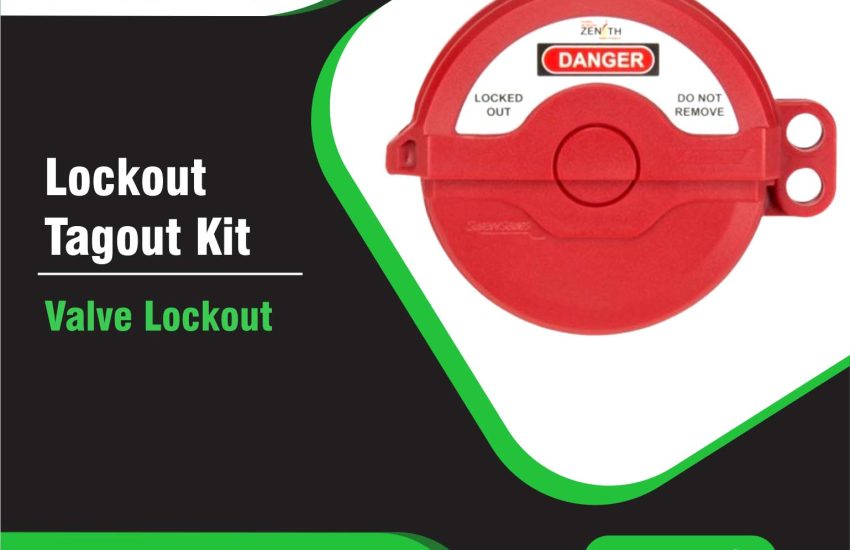Valve Lockout The Ultimate Guide Valve lockout devices are essential safety tools used in industrial environments to prevent the accidental operation of valves during maintenance, repair, or emergency situations. These devices keep valves in a safe, off position, protecting workers from the risks of uncontrolled valve operation. In this guide, we’ll explore the specifications, features, and types of valve lockouts, while incorporating key SEO-friendly terms.
Valve Lockout The Ultimate Guide What Is a Valve Lockout?
A valve lockout is a device that secures valves in the off position to prevent unauthorized or accidental activation. These devices are part of the broader Lockout/Tagout (LOTO) program, which controls hazardous energy during maintenance. Valve lockouts play a crucial role in protecting workers from exposure to dangerous chemicals, extreme pressures, or accidents.
Specifications of Valve Lockout Devices
Valve lockouts come in various designs and materials. Below are the key specifications to consider when choosing a valve lockout:
1. Material
- Polycarbonate/Polypropylene: These durable plastics resist chemicals, UV radiation, and extreme temperatures. They are suitable for both indoor and outdoor use.
- Steel/Stainless Steel: Some lockouts use metal components for additional strength and durability. These are ideal for heavy-duty industrial applications.
2. Compatibility
- Valve Type: Valve lockouts are designed for different valve types, including ball, gate, butterfly, and multi-turn valves. It’s essential to choose a device that fits the specific valve design.
- Size Adjustment: Many valve lockouts feature adjustable mechanisms to fit various valve handle sizes and shapes, such as round, T-shaped, or lever handles.
3. Locking Mechanism
- Padlock Compatibility: Most valve lockouts allow you to attach a padlock, preventing unauthorized access. You can use multiple locks for multi-person safety.
- Lockout Capability: Many valve lockouts support up to six locks, which is necessary for compliance with safety standards, especially in team-based operations.
4. Visibility and Identification
- Bright Colors and Labels: Valve lockouts are often brightly colored, such as red or yellow, to enhance visibility. They include labels for clear identification, ensuring workers can quickly notice the device.
- Warning Symbols: Some models also feature safety warning labels or symbols to highlight the importance of securing the valve before operation.
5. Temperature and Pressure Resistance
- Heat Resistance: Some valve lockouts can withstand extreme temperatures, making them suitable for environments with steam, hot liquids, or cryogenic materials.
- Pressure Handling: Valve lockouts are designed to securely lock valves under high-pressure conditions. This is crucial in industries like oil and gas, chemical plants, and utilities.
Types of Valve Lockouts
There are several types of valve lockouts, each designed to lock specific valve mechanisms. Here are the most common types:
1. Ball Valve Lockout
Ball valve lockouts fit around the valve handle to prevent rotation. They usually have a hinged or split design for easy application and removal. This ensures quick and secure locking.
2. Gate Valve Lockout
Gate valve lockouts typically adjust to fit around the valve stem. They often include a handle that secures the device, preventing valve operation.
3. Butterfly Valve Lockout
Butterfly valve lockouts are used to secure the levers on butterfly valves, commonly found in HVAC systems, water treatment plants, and other industrial settings. These devices are easy to use and facilitate quick locking.
4. Quarter-Turn Valve Lockout
Quarter-turn valve lockouts are designed for valves that require only a 90-degree turn to open or close. These devices are widely used in gas pipelines, chemical processing, and utility applications.
Key Benefits of Using Valve Lockouts
Valve lockouts provide several important benefits, both for employers and workers:
- Enhanced Worker Safety: Valve lockouts prevent unauthorized or accidental valve operation, reducing the risk of injury from hazardous energy sources.
- Compliance with OSHA and Safety Standards: Using valve lockouts ensures compliance with OSHA’s Lockout/Tagout (LOTO) regulations, which require the control of hazardous energy during maintenance.
- Increased Operational Efficiency: By locking out valves during maintenance, workers can ensure that equipment is safe to service. This reduces downtime and boosts productivity.
Compliance with Safety Standards
Valve lockouts must adhere to specific safety standards to ensure they provide adequate protection. Some key standards include:
- OSHA 1910.147: This OSHA standard outlines the requirements for Lockout/Tagout procedures, including the use of valve lockouts.
- ANSI Z244.1: The American National Standards Institute (ANSI) provides guidelines for LOTO devices, ensuring they are effective in controlling hazardous energy during maintenance.
- ISO 45001: This international standard for occupational health and safety management emphasizes the use of safety devices like valve lockouts to protect workers.
How to Choose the Right Valve Lockout for Your Facility
When selecting a valve lockout, keep the following factors in mind:
- Valve Type and Size: Make sure the lockout fits the valve type (ball, gate, butterfly, etc.) and its size.
- Durability: Choose a lockout made from materials that can withstand specific environmental conditions (e.g., temperature, pressure, chemicals).
- Ease of Use: Opt for a device that is easy to apply and remove, especially for complex systems or multiple valves.
- Compliance: Ensure the lockout device meets the necessary safety standards for your industry, such as OSHA or ANSI regulations.
Conclusion
Valve Lockout The Ultimate Guide Valve lockouts are a vital part of workplace safety programs. They help protect workers by ensuring that valves stay in a safe, off position during maintenance and service operations. By understanding the specifications, benefits, and compliance standards associated with valve lockouts, you can make informed decisions to improve safety and efficiency in your facility. Whether you’re working with ball, gate, butterfly, or quarter-turn valves, choosing the right valve lockout is crucial for maintaining a safe working environment.


